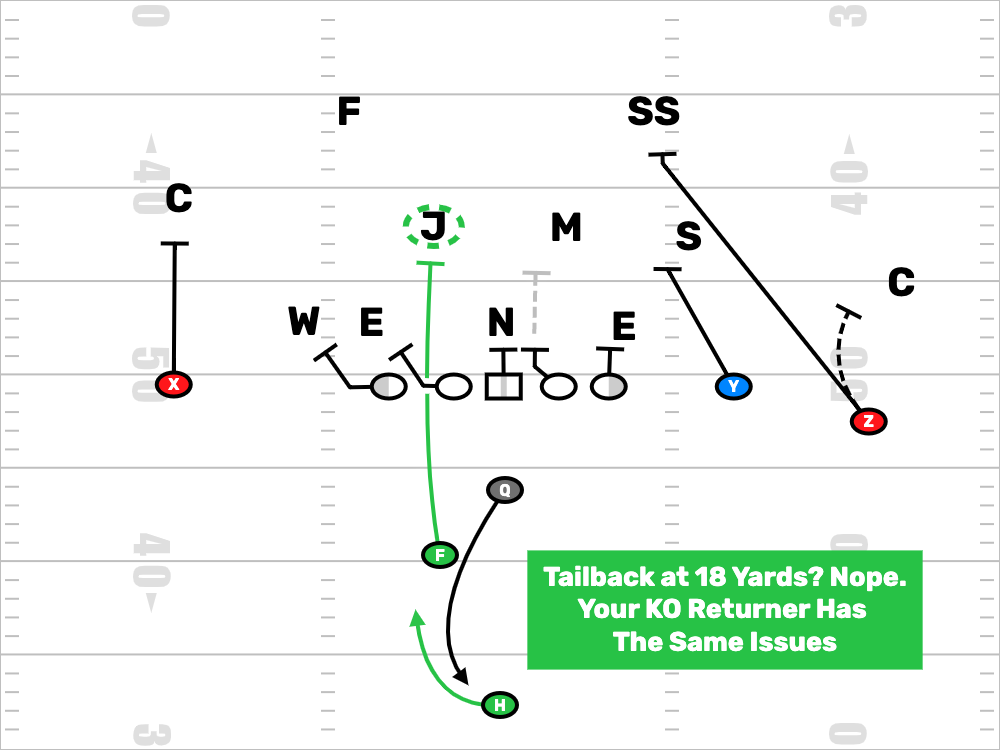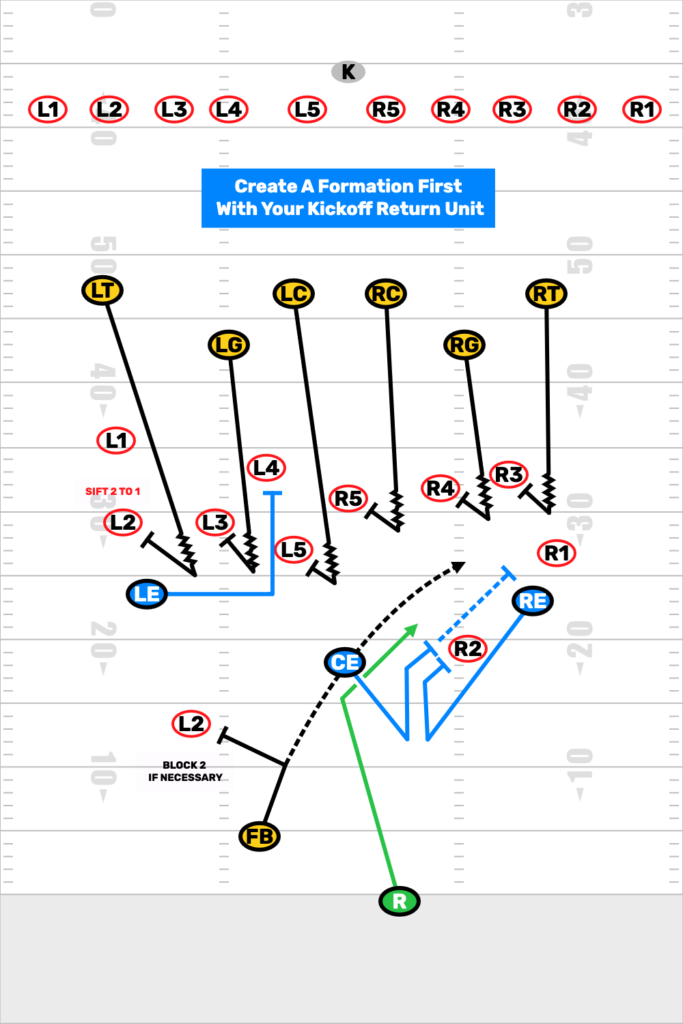Your Kickoff Return Formation
The moment that a football play is put into motion, the team who is taking the snap or receiving the football must create an offensive formation. Sounds like common sense right? That is until we ask the question, what is your kickoff return formation? This is when you get that sideways look that says “What are you talking about?”
Football coaches take great pride in their demand for attention to detail. A fraction of a second here or six inches there has cost many of us a football game. Walk out onto any practice field and you will hear a coach demanding detail. The quarterback must take a five step drop without a hitch as opposed to the hitch. On the other end of the field, you will hear a defensive line coach demanding a six (not a seven) inch first step when the ball is snapped.
Many Kickoff Returns Are Doomed Before The Returner Takes One Step With The Ball
Then the horn blows and we start our special teams period. Kickoff return is the emphasis of the day. No other play in football takes up more field and has to be executed in this much space as a kickoff return. Yet, some of the attention to detail often goes out the door.
Many kickoff returns are doomed before the returner takes his first step with the ball. Long before any of his blockers ever make contact with the coverage team. Why? A kickoff return is nothing more than an offensive play in space. All offensive plays start with a formation and a Kickoff Return is an offensive play. No formation means no play.
Imagine trying to run a lead play on offense with your fullback at 14 yards and your tailback at 18 yards. No way right? Well if you watch enough kickoff return units you will see it all of the time.
A Kickoff Return Formation Is A Snapshot Of All 11 Players As The Returner Catches The Ball
Before you do anything else with your kickoff return unit, make sure that your players understand that you are creating an offensive formation. This formation is a snapshot of all eleven players at the point when and where the returner catches the ball. Give the unit clear and definitive spots to be on the field when you take this snapshot then demand that they get there.
Like a lot of things in football, there can’t be eleven chiefs out there. The players on the front line in some ways are independent contractors. They must rely on the flight of the ball and the location of the returner to get their drop angle. It is critical that they drop and flip their hips based on the ball and returner as he starts up field.
In this six man front return unit the call end and fullback are critical to creating an offensive formation. On the return drawing here, the call end must set up at a depth 14 yards in front and two yards to the return side from where the returner catches the ball. The right end must find the call end. No excuses. When the ends form a two man wedge their eyes get back to the coverage unit. They are not looking at the returner.
Use The “Whole Part Whole Theory With Kickoff Return Installations
The fullback needs to be your leader on this unit. Not only must this player understand the scheme, but they also must be a great communicator. His positioning will change up based on individual returns. You are always trying to find a way to get him on the front side of the return if you can. If the coverage unit has a threat away from the side of the return then he must secure this and give the play a chance to get started.
Related: “Ball-Flight-Returner-Man” :Coaching Your Kickoff Return Front Line
His additional responsibility is to see the returner and give everyone a “Go” call when he catches the ball. Once again, the positioning of the formation is only part of it. The positions are based on everyone on the back part of the return starting to their blocks at the same time. The same way an offense starts on a snap count.
Finally, the most important thing of all may be that when the fullback says “Go” everyone GOES! A great offensive lineman doesn’t think about where his back is on a run play. The back also does not look to see if the block is going to be made before hitting the hole. This is no different. Everyone must execute their technique and the returner must hit the return full speed where he is supposed to. Every return is a leap of faith on the part of all eleven players.
FirstDown PlayBook Special teams Clinics Cover All 6 Phases
It is your job as a coach, to break your return down for your team and explain how it all fits together. They are all offensive or defensive players, so creating a formation will make sense to them. Keep it simple and about the time that your returner spits one into the second level and is one on one with the kicker it will make sense to you too.



